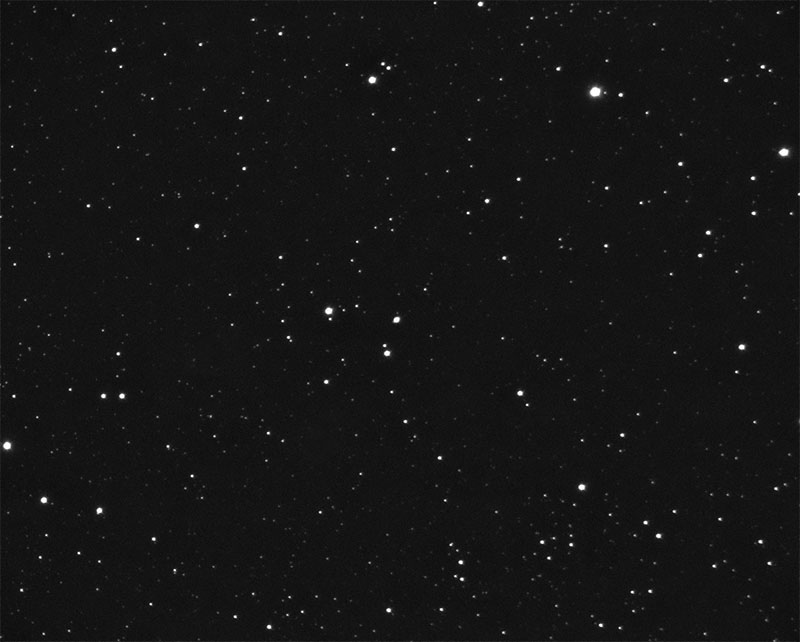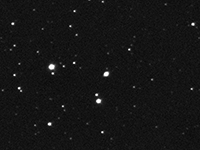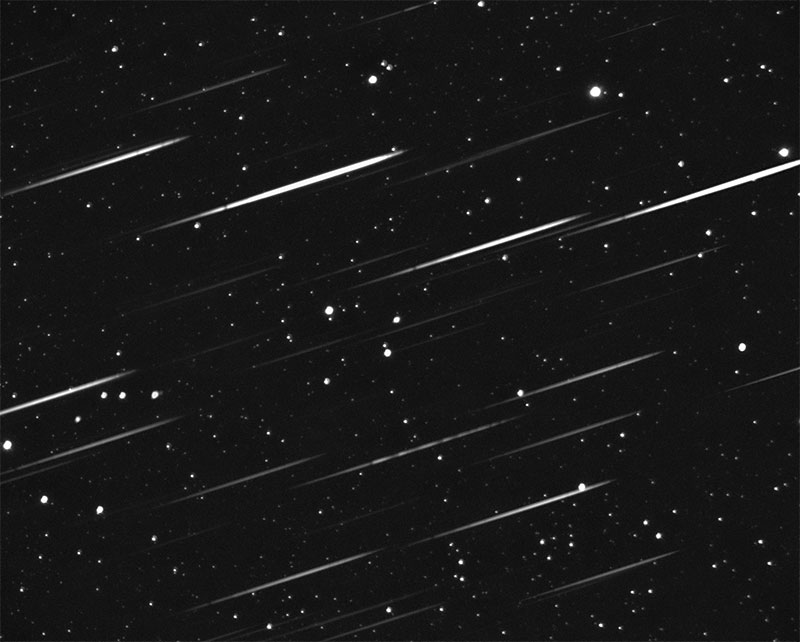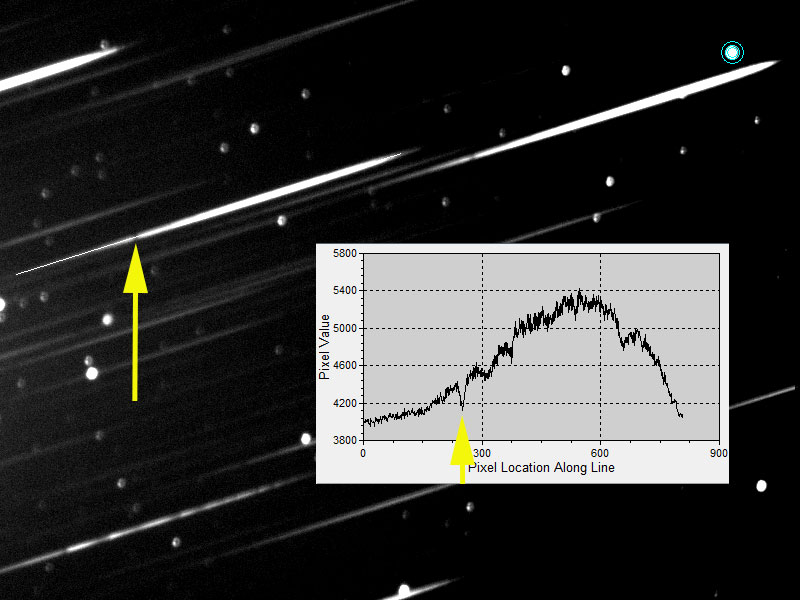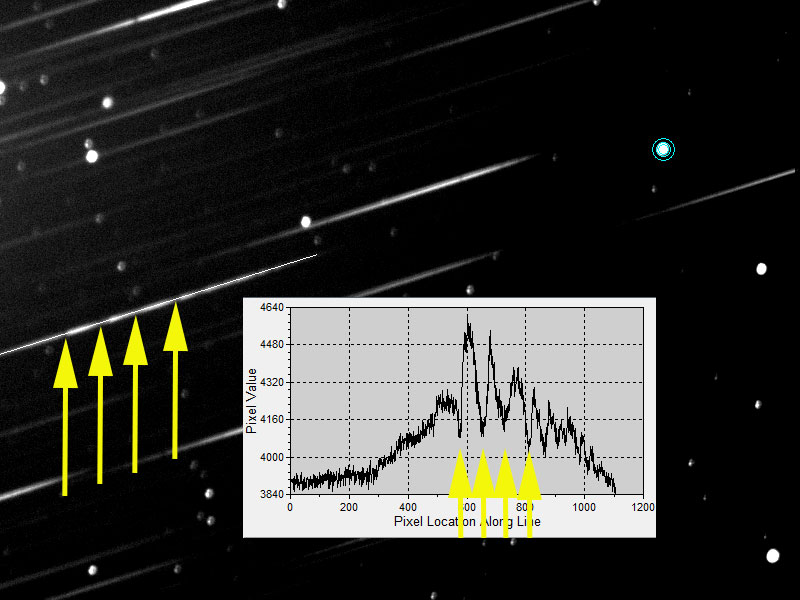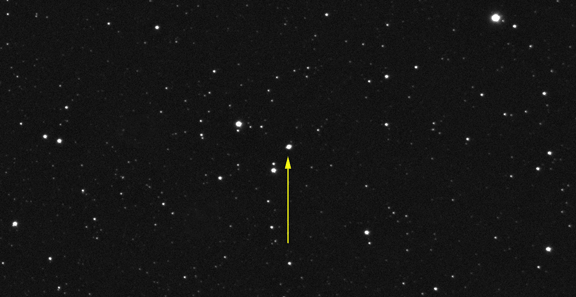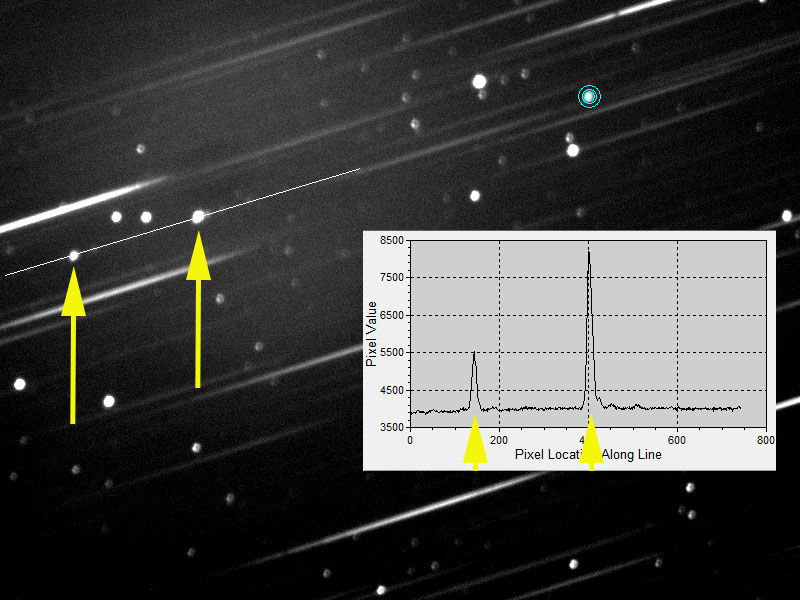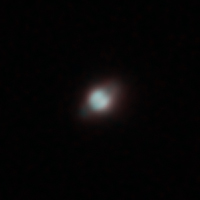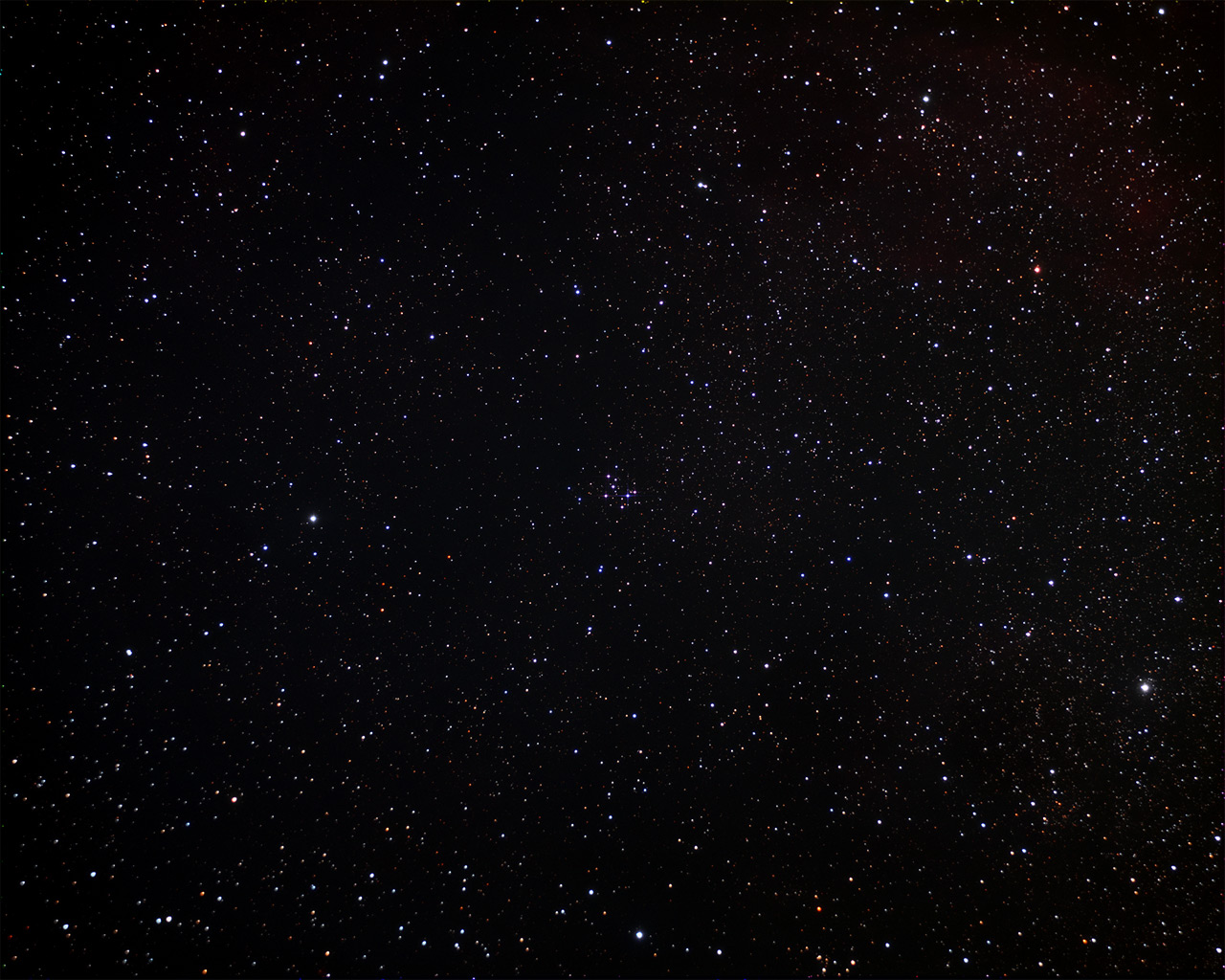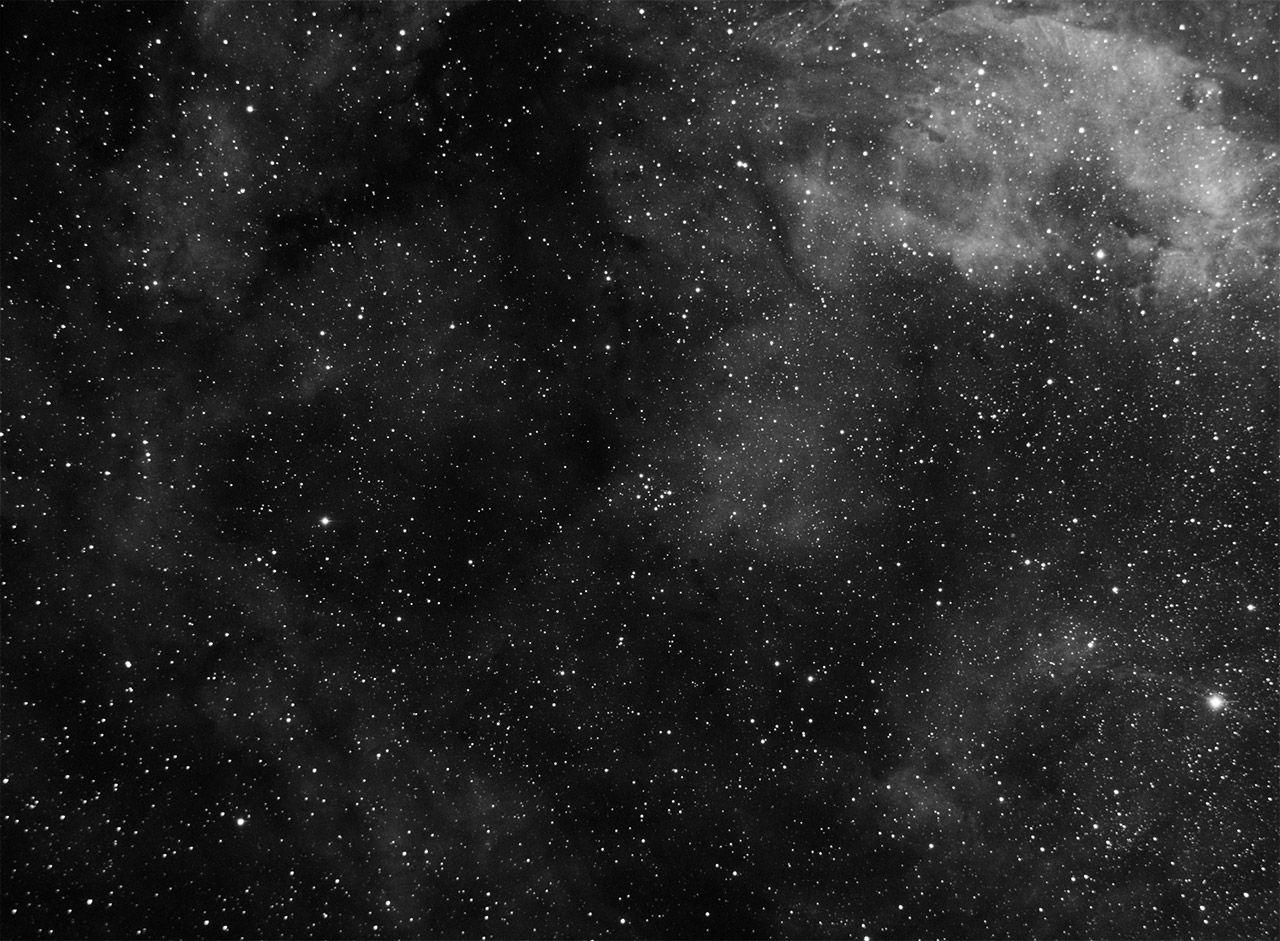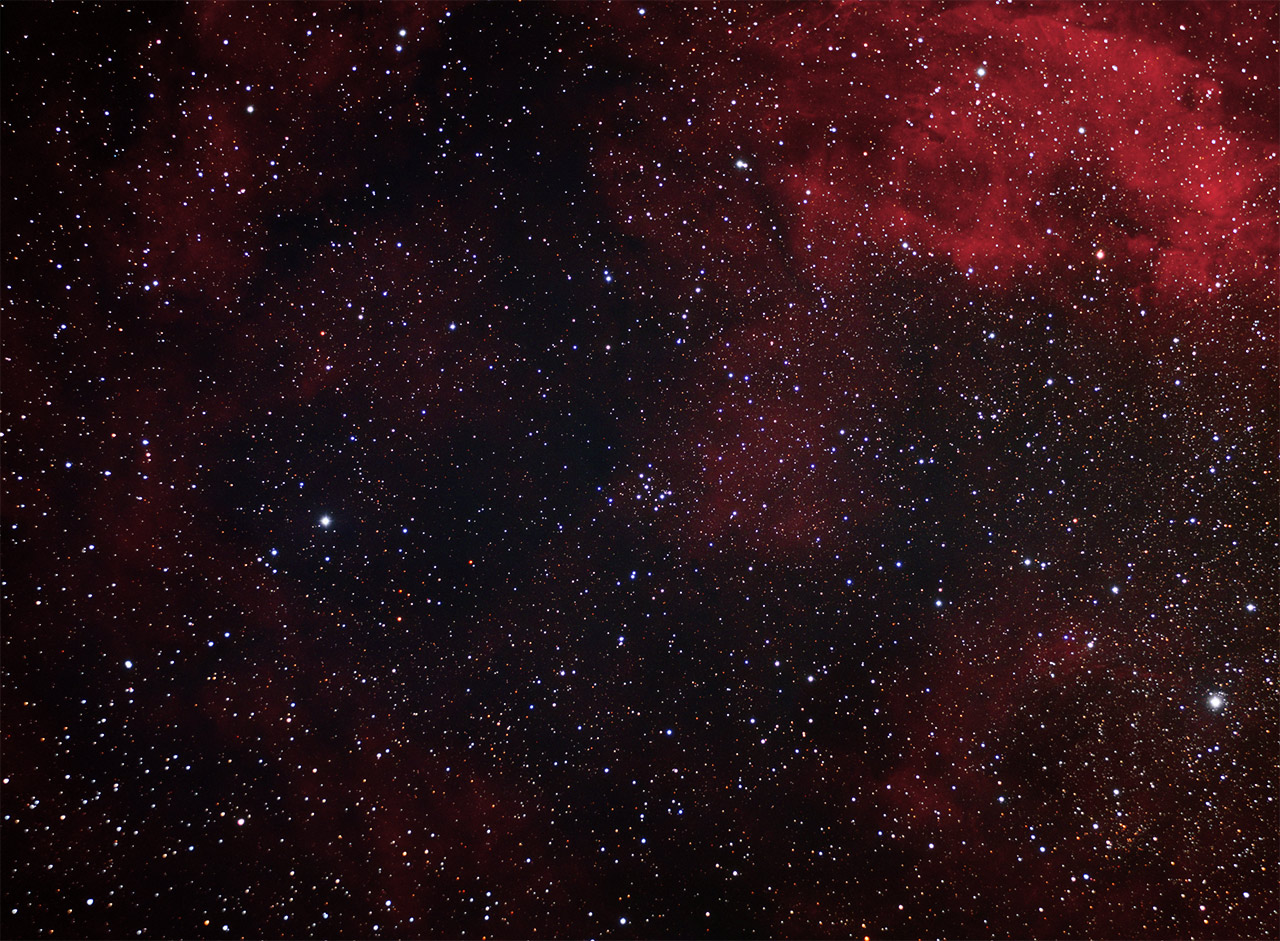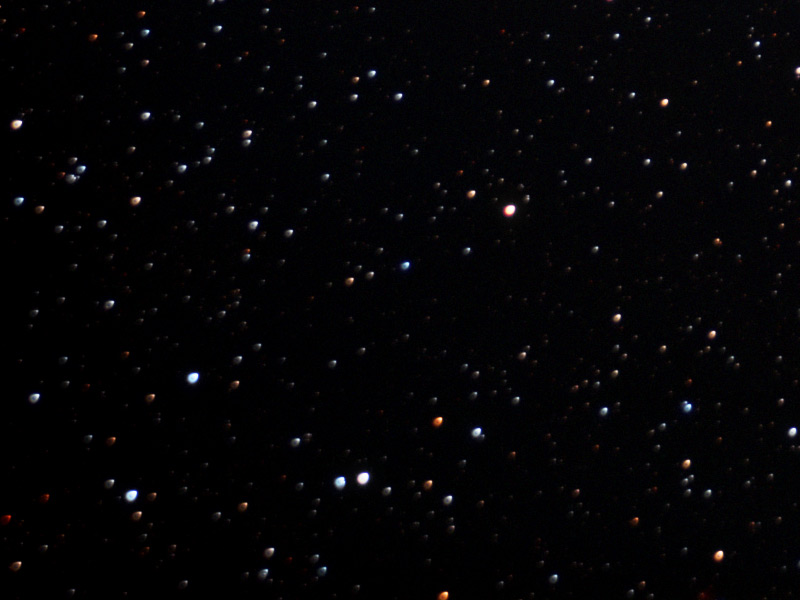NGC 6886 is a stellate planetary nebula--it's so small it can't be distinguished from a star.
Here's a grey-scale image which basically looks like a field of stars:
blinking this with an image using an OIII filter reveals the planetary nebula:
it appears to be a star, but gets brighter compared to the surrounding stars with the filter indicating OIII emission, a characteristic of planetary nebulae (see previous post)
here's an image of the field using a filter with a diffraction grating which separates the light into its spectrum:
most stars yield a broad streak of light (left of star) with dark absorption lines corresponding to various elements ionizing as they absorb light. the location of the absorption lines can be likened to the fingerprint of the star, showing which elements/ions are present and helping to classify the star.
here's a typical spectrum with a few characteristic absorption lines:
another star with a mess of broad absorption lines characteristic not of elements, but various metallic molecules, many involving titanium, which is another story:
a close look at a blink of the spectrum compared to the luminance shows two "new stars" appearing
in the spectral image (left side):
this is the planetary nebula, without a typical stellar spectrum, but rather very specific emission lines:
the brightest is OIII, oxygen; the second brightest Ha and NII (hydrogen and nitrogen).
the faint lines to the right of OIII are Hydrogen beta and Helium II--not a great target for Helium imaging
lastly, here's a very high resolution image (0.2"/pixel) taken with NII and OIII filters
"Clearly" showing a tiny bipolar planetary nebula resembling the Saturn nebula
happy new year
bill w
more on the spectroscope
image details:
8" LX200R, SX Trius 694 0.4"/px
final nebula image upsampled to .2"/px
astrodon 3nm OIII, 3 nm NII, rainbow optics filter
ASA DDM60
OIII 33 x 5 min, NII 22 x 5 min, luminance 11 x 30 sec, spectrum 13 x 5 minutes
8/31-9/30/2016
eastbluff, CA
no calibration ;)
Try increasing gamma if dark sections aren't distinguished
Tuesday, January 3, 2017
Sunday, October 2, 2016
open cluster Messier 29, the pants cluster?
M 29 is an open cluster in cygnus:

relatively bright, an easy target for a small telescope or binoculars
the 5 brightest stars are B0 giants, 160,000 times brighter than the sun
a wider field caught some faint nebulosity
(upper right, click on images below for full size):
so i shot some Hydrogen alpha images
to dress it up:
in doing a web search on this
i came across (trigger warning) this bizarre image which links to a youtube video
by British astronomer Pete Lawrence.
apparently pants is slang for "not good" and normally refers to "underpants".
anyway what he's getting at is that it's not the most impressive cluster out there.
part of the reason for this is that intervening dust obscures the light from these stars by a factor of 1000. furthermore, the cluster sits in cygnus, a section of the sky very rich in background stars.
that being said, in my long focal length SCT (high power/narrow field) it's a nicely defined object whereas most open clusters are too big to be encompassed by the SCT's field
i shot it mainly as a test of my short focal length refractor
which didn't turn out that well as evidenced by these ugly distorted stars in the corners that i had to crop out:
Imaging details:
Takahashi FS-60C F/4.2
Starlight Xpress Trius 694 3.7"/px
astrodon 5nm Ha, RGB E-series filters
ASA DDM60
Ha 36x5 min, RGB 20x1 minute each channel
8/22-29/2016
Eastbluff, CA
references:
http://www.universetoday.com/33087/messier-29/
https://www.youtube.com/watch?v=eEMwOHvay7s
relatively bright, an easy target for a small telescope or binoculars
the 5 brightest stars are B0 giants, 160,000 times brighter than the sun
a wider field caught some faint nebulosity
(upper right, click on images below for full size):
so i shot some Hydrogen alpha images
to dress it up:
in doing a web search on this
i came across (trigger warning) this bizarre image which links to a youtube video
by British astronomer Pete Lawrence.
apparently pants is slang for "not good" and normally refers to "underpants".
anyway what he's getting at is that it's not the most impressive cluster out there.
part of the reason for this is that intervening dust obscures the light from these stars by a factor of 1000. furthermore, the cluster sits in cygnus, a section of the sky very rich in background stars.
that being said, in my long focal length SCT (high power/narrow field) it's a nicely defined object whereas most open clusters are too big to be encompassed by the SCT's field
i shot it mainly as a test of my short focal length refractor
which didn't turn out that well as evidenced by these ugly distorted stars in the corners that i had to crop out:
Imaging details:
Takahashi FS-60C F/4.2
Starlight Xpress Trius 694 3.7"/px
astrodon 5nm Ha, RGB E-series filters
ASA DDM60
Ha 36x5 min, RGB 20x1 minute each channel
8/22-29/2016
Eastbluff, CA
references:
http://www.universetoday.com/33087/messier-29/
https://www.youtube.com/watch?v=eEMwOHvay7s
Subscribe to:
Posts (Atom)
